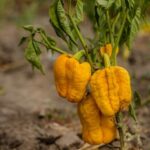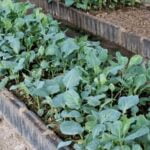Florida vegetable gardening offers unique opportunities and challenges due to the state’s climate and soil conditions. In this article, we will delve into the thriving world of Florida vegetable gardening, providing you with tips and techniques to create a successful and sustainable garden.
When it comes to growing your own vegetables in Florida, there are numerous benefits. Not only do you have control over what fertilizers and pesticides are used on your crops, but you also have access to fresh and nutritious produce right in your backyard. Plus, gardening can be a rewarding and therapeutic activity that allows you to connect with nature and reduce your carbon footprint.
Throughout this blog post, we will cover a range of topics related to Florida vegetable gardening. We’ll start by discussing how to select the right vegetables for Florida’s unique climate and soil conditions, highlighting heat-tolerant varieties that thrive in the hot and humid summers. We will also provide guidance on preparing and amending soil for optimal plant growth, as well as timing and planning strategies to maximize productivity throughout the year.
So whether you’re a seasoned gardener or just starting out, join us as we explore the world of Florida vegetable gardening and discover how to create a fruitful and sustainable garden in the Sunshine State.
Selecting the Right Vegetables for Florida’s Unique Climate and Soil
Florida’s climate and soil conditions provide both opportunities and challenges for vegetable gardening. With its warm temperatures, abundant sunshine, and mild winters, Florida offers a long growing season that allows gardeners to produce vegetables year-round. However, the sandy soil found in many parts of the state can present difficulties in retaining moisture and nutrients. To have a successful vegetable garden in Florida, it is important to select the right vegetables that thrive in its unique climate and soil.
When choosing vegetables for your Florida garden, it is essential to research varieties that are capable of thriving in the state’s climate. Look for heat-tolerant options that can withstand the intense summer temperatures common in Florida. Some examples include tomatoes, peppers, cucumbers, okra, sweet potatoes, and melons.
In addition to considering the climate, it is crucial to choose vegetables that adapt well to Florida’s soil conditions. Sandy soil drains quickly and may require more frequent watering. On the other hand, clayey soil retains water but can become compacted easily. Opting for plants that can tolerate these soil types will increase your chances of success. Vegetables such as beans, lettuce, radishes, herbs like rosemary and thyme are known to adapt well to different soil conditions.
By selecting heat-tolerant and pest-resistant vegetable varieties adapted specifically for Florida’s climate and soil conditions, you can increase your chances of a productive harvest throughout the year. Researching seed catalogs or consulting with local agricultural extension offices can provide valuable information on suitable vegetable varieties for planting in Florida gardens.
Overall,it is importantto do some research before starting your Florida Vegetable Garden By choosing vegetables adapted specifically for Florida’s unique climate and soil conditions you set yourself up for success from day one.
Preparing and Amending Soil for Successful Vegetable Gardening in Florida
Understanding the Importance of Soil Preparation and Nutrients
Preparing and amending the soil is a crucial step for successful vegetable gardening in Florida. The quality of your soil directly affects the health and productivity of your plants. In Florida, where the soil tends to be sandy and low in organic matter, proper soil preparation is essential for creating a fertile environment for your vegetables to thrive.
One of the key aspects of soil preparation is ensuring that it has sufficient nutrients. Before planting, it’s important to assess the nutrient content of your soil and make any necessary amendments. Conducting a soil test allows you to determine its pH level and nutrient deficiencies. You can obtain a soil test kit from your local cooperative extension office or find laboratory services that specialize in analyzing soil samples.
Tips and Techniques for Testing and Improving Soil Quality
Once you have identified any nutrient deficiencies, you can take appropriate measures to address them. Adding organic matter, such as compost, is an effective way to improve the structure, water-holding capacity, and fertility of Florida soils. Compost provides essential nutrients while enhancing microbial activity in the soil. Aim to add about 2-4 inches of compost per year to maintain optimal fertility.
In addition to organic matter, other amendments like lime or sulfur might be necessary to adjust the pH level of your soil if it’s too acidic or alkaline. Most vegetables prefer slightly acidic soils with a pH range between 6.0 and 6.8.
Another technique that can help improve your Florida garden’s soil quality is cover cropping. Planting cover crops during the off-season can help suppress weeds, prevent erosion, enhance organic matter content, and increase nitrogen availability in the soil.
Discussing Organic Matter, Composting, and Fertilizer Application
Organic matter plays a vital role in maintaining healthy soils over time. It improves soil structure, retains moisture, enhances nutrient availability, and supports beneficial microbial activity. Composting kitchen scraps, yard waste, and other organic materials is an excellent way to create nutrient-rich compost that can be incorporated into your garden beds.
When it comes to fertilizer application in Florida vegetable gardens, it’s important to follow a balanced approach. Excessive fertilizer use can lead to nutrient imbalances and environmental pollution. Before applying any fertilizers, it’s essential to understand the specific needs of your vegetable crops. High-quality organic fertilizers that release nutrients slowly are often a preferred choice as they provide sustained nutrition over time.
By adequately preparing and amending your soil, you are setting the foundation for a successful vegetable garden in Florida. Taking these steps not only improves plant health and productivity but also promotes sustainable gardening practices that benefit the environment.
Timing and Planning for Florida Vegetable Gardening
When it comes to successful vegetable gardening in Florida, timing and planning are crucial. Due to its unique climate and growing seasons, it is important to have a planting calendar tailored specifically to Florida’s conditions. By understanding the timing for sowing seeds, transplanting, and harvesting, you can maximize your productivity and yield.
To create an effective planting calendar for Florida, it is essential to consider regional variations within the state. Florida can be divided into three main regions – North Florida, Central Florida, and South Florida – each with its own distinct climate patterns. Understanding these variations will help you determine the best time to plant specific vegetables based on when frost typically occurs and the average temperature ranges.
When sowing seeds or transplanting seedlings, it is important to consider the heat tolerance of the vegetables you choose. Vegetables like tomatoes, peppers, eggplants, okra, and sweet potatoes thrive in hot temperatures. However, cool-season crops like lettuce, broccoli, spinach, and carrots prefer slightly cooler temperatures in Florida’s winter months.
Succession planting is another technique that can be used in Florida vegetable gardening. By planting new crops as soon as a previous one has finished producing or has been harvested, you can extend your harvest throughout the year.
Crop rotation is also an essential practice in timing and planning for vegetable gardening in Florida. This method involves moving crops from one location to another each year to prevent the buildup of pests and diseases specific to certain plants. It helps improve soil health by reducing nutrient depletion as different plants have varying nutrient requirements.
Efficient Watering and Irrigation Techniques for Florida Vegetable Gardens
Proper watering is essential for the success of vegetable gardens in Florida’s climate. With the intense heat and frequent rainfall, it’s important to implement efficient watering and irrigation techniques to ensure your plants receive the right amount of moisture without wasting water. Here are some tips to help you efficiently water your Florida vegetable garden:
- Deep Watering: Instead of giving your plants a quick sprinkle every day, it is better to deeply water them less frequently. This encourages deep root growth, making your plants more resilient during dry periods. Aim to provide about 1 inch of water per week, either through rainfall or irrigation.
- Consider the Weather: Florida’s weather can be unpredictable, with frequent rain showers and sudden downpours. Keep an eye on the weather forecast so you can adjust your watering schedule accordingly. If there has been a significant amount of rainfall, you may need to reduce or skip a watering session.
- Drip Irrigation: Using drip irrigation systems is a highly efficient method for watering vegetable gardens in Florida. It delivers water directly to the roots of the plants, minimizing evaporation and reducing weed growth. Additionally, drip irrigation systems allow for precise control over how much water each plant receives.
- Mulching: Applying mulch around your vegetable plants helps retain soil moisture by reducing evaporation and suppressing weed growth. Organic materials like straw or wood chips make excellent mulch choices for Florida gardens.
- Time Your Watering: The best time to water your vegetable garden is early in the morning when temperatures are cooler and humidity tends to be higher. This allows the leaves ample time to dry before nightfall, preventing fungal diseases from developing.
- Monitor Plant Needs: Different vegetables have different water requirements, so pay attention to their specific needs. Some varieties may require regular moisture while others are more drought-tolerant. Use this information as a guide when determining how often and how much to water each type of vegetable.
By implementing efficient watering and irrigation techniques, you can ensure your Florida vegetable garden stays healthy and productive while conserving water. Taking the time to properly water your plants will result in strong, thriving vegetables that are more resilient to Florida’s unique climate.
Managing Pests and Diseases in Florida Vegetable Gardens
Florida vegetable gardens are not exempt from the challenges of pests and diseases that can affect the health and productivity of plants. However, by being diligent in monitoring and implementing effective pest control methods, gardeners can protect their crops and ensure a successful harvest. This section will provide information on identifying common pests and diseases in Florida vegetable plants, as well as natural and organic pest control methods suitable for the region.
One of the most common pests found in Florida vegetable gardens is the tomato hornworm. These large caterpillars can quickly defoliate tomato plants if left unchecked. To manage tomato hornworms, it is important to inspect plants regularly and manually remove any caterpillars found. Additionally, beneficial insects such as lacewigs or Trichogramma wasps can be introduced to help control these pests naturally.
Another common pest in Florida gardens is the sweet potato whitefly. These tiny insects feed on the sap of plants, leading to yellowing leaves, stunted growth, and the spread of viral diseases. Yellow sticky traps placed around infested plants can help reduce whitefly populations by trapping adult flies. For severe infestations, using insecticidal soaps or oil sprays may be necessary.
In addition to pests, Florida vegetable gardens also face various diseases such as blight and powdery mildew. To prevent these diseases from spreading, it is important to practice good sanitation by removing and disposing of infected plant material promptly. Proper air circulation around plants can also minimize disease development. Organic treatments like sulfur-based fungicides can be used to control fungal diseases.
| Pests | Diseases |
|---|---|
| Tomato hornworm | Blight |
| Sweet potato whitefly | Powdery mildew |
Best Practices for Fertilization and Nutrient Management in Florida Vegetable Gardens
Florida vegetable gardens require proper fertilization and nutrient management in order to thrive and produce a bountiful harvest. This section will provide guidance on understanding the nutritional needs of Florida vegetables, different fertilization methods, and how to prevent nutrient deficiencies.
Understanding Nutritional Needs
In order to provide proper nutrition to your vegetable plants, it is important to understand their specific needs. Different vegetables have varying requirements for nutrients such as nitrogen, phosphorus, potassium, and micronutrients. Researching the nutritional requirements of the specific vegetables you are growing will help you determine the best approach for fertilization.
Fertilization Methods
There are various methods of fertilizing and providing nutrients to your Florida vegetable garden. One common method is using traditional chemical fertilizers that are available in granular or liquid form. These fertilizers can be applied directly to the soil or diluted in water for foliar application. It is important to follow package instructions for proper application rates and timing.
Another popular option for organic gardeners is using natural sources of nutrients such as compost, manure, or organic fertilizers. Compost provides a slow-release source of nutrients while also improving soil structure and fertility. Manure can be used as a top dressing or incorporated into the soil before planting. Organic fertilizers made from materials like fish emulsion or bone meal can also be used to supplement nutrient levels.
Preventing Nutrient Deficiencies
Nutrient deficiencies can lead to stunted growth, poor fruit development, and increased susceptibility to pests and diseases in vegetable plants. Regular monitoring of your plants’ health is essential in identifying potential nutrient deficiencies early on. Yellowing leaves, stunted growth, and reduced fruit production may indicate specific nutrient deficiencies that need to be addressed.
To prevent nutrient deficiencies, it is important to maintain balanced fertility in your soil by regularly testing its nutrient levels. This can be done through soil testing kits or by sending samples to a laboratory for analysis. Based on the results, you can adjust your fertilization regime to meet the specific needs of your vegetables.
Harvesting and Preserving Your Bounty
When it comes to vegetable gardening in Florida, the ultimate goal is to reap the rewards of your hard work by harvesting a bountiful crop. But knowing when and how to harvest your vegetables, as well as how to properly preserve them, is essential in order to enjoy them all year round. In this section, we will provide you with valuable tips and tricks for harvesting and preserving your bounty in the Sunshine State.
One of the keys to successful vegetable gardening is knowing when to harvest. Harvesting at the right time ensures that your vegetables are at their peak flavor and nutritional value. Each vegetable has its own cues for when it is ready to be picked. For example, tomatoes should be fully colored but still firm when gently squeezed, while cucumbers are best harvested when they reach a desirable size and before they become too large or yellow.
To get the most out of your harvest, it’s important to properly store and preserve your vegetables. Freezing is one popular method for preserving vegetables as it helps retain their flavor and nutrients. Before freezing, blanching certain vegetables like green beans or broccoli helps maintain their color, texture, and overall quality during storage.
Canning is another option that allows you to enjoy homegrown produce throughout the year. This method involves sterilizing glass jars filled with vegetables in a water bath or pressure canner. Pickling is yet another way to preserve vegetables, particularly cucumbers or other firm produce.
| Vegetable | Storage Method |
|---|---|
| Tomatoes | Store at room temperature until ripe, then refrigerate |
| Cucumbers | Refrigerate for up to a week or pickle for longer storage |
| Leafy greens (lettuce, spinach, kale) | Store in the refrigerator, unwashed and loosely wrapped in plastic |
| Root vegetables (carrots, beets, radishes) | Trim off greens and store in a cool, dark place like a root cellar or refrigerator crisper drawer |
| Summer squash (zucchini, yellow squash) | Store in the refrigerator for up to a week or freeze for longer storage |
By following these tips and tricks for harvesting and preserving your vegetables, you can enjoy the fruits of your labor long after the gardening season has ended. Whether you choose to freeze, can, or pickle your produce, each method offers unique benefits that allow you to enjoy homegrown goodness year-round. So go ahead and savor the taste of your Florida garden all year round by harvesting and preserving your bounty with confidence.
Conclusion
As we come to the end of this blog post, we hope that you have found valuable information and tips to guide you in your Florida vegetable gardening journey. Florida’s unique climate and soil conditions provide both opportunities and challenges for growing your own vegetables, but with the right knowledge and techniques, you can create a satisfying and sustainable garden.
Throughout this post, we have emphasized the importance of selecting the right vegetables for Florida’s climate and soil. By researching varieties that are heat-tolerant and pest-resistant, you increase your chances of success. Additionally, preparing and amending the soil is crucial for healthy plant growth. Remember to test your soil quality regularly and incorporate organic matter, composting, and fertilizer application into your routine.
Timing is also key when it comes to Florida vegetable gardening. Creating a planting calendar specific to Florida’s growing seasons will help you maximize productivity. Consider sowing seeds, transplanting, and harvesting based on regional variations, as well as utilizing succession planting and crop rotation techniques.
Efficient watering techniques are essential in Florida’s climate. Deep watering schedules, along with considering weather conditions, will help meet your vegetables’ water requirements while promoting water conservation. Drip irrigation systems are also worth exploring for their efficiency.
Pest and disease management is another crucial aspect of successful vegetable gardening in Florida. Identifying common pests and diseases early on will allow you to implement natural and organic control methods effectively. Companion planting can also be beneficial in deterring pests.
Lastly, we discussed best practices for fertilization and nutrient management in Florida vegetable gardens. Understanding the nutritional needs of your plants and preventing nutrient deficiencies through proper management will contribute to healthy growth.
In conclusion, we encourage all Florida gardeners to embrace the joys and rewards of vegetable gardening. Not only do homegrown vegetables provide fresh flavors for your plate but they also offer potential environmental benefits by reducing food miles and promoting sustainable practices. We hope that these tips will help you on your journey to a satisfying and sustainable garden in the Sunshine State. Happy gardening.
Frequently Asked Questions
What vegetables are good to grow right now in Florida?
In Florida, some vegetables that are good to grow right now include tomatoes, peppers, beans, cucumbers, and squash. These warm-season vegetables thrive in Florida’s climate and can be planted during the spring and early summer months. Tomatoes and peppers offer a variety of choices, including cherry tomatoes, beefsteak tomatoes, bell peppers, and spicy chili peppers.
Beans like green beans or bush beans are easy to grow and provide a bountiful harvest. Cucumbers are perfect for salads or pickling, while summer squash varieties such as zucchini or yellow squash are versatile options.
When should I start a vegetable garden in Florida?
The ideal time to start a vegetable garden in Florida depends on the specific region within the state. Generally, most areas in Florida have a long growing season due to the warm climate. However, there may still be seasonal variations across different parts of the state.
For Central and South Florida, where frost is less common or late into winter, starting a vegetable garden can be done as early as February or March. In North Florida, where frost can occur until as late as March or April depending on the area, it is often recommended to start planting around April or May.
What vegetables are easiest to grow in Florida?
Several vegetables are particularly easy to grow in Florida due to its favorable climate conditions. One of these vegetables is okra. Okra plants thrive in warm temperatures and require minimal care once established; they produce an abundant yield throughout the summer months.
Another vegetable that is easy to grow is sweet potatoes. These vines enjoy full sun and well-drained soil while being relatively low maintenance during their growing period of approximately four months before harvesting flavorful tubers rich in nutrients.

If you’re looking to get into vegetable gardening, or are just looking for some tips on how to make your current garden better, then you’ve come to the right place! My name is Ethel and I have been gardening for years. In this blog, I’m going to share with you some of my best tips on how to create a successful vegetable garden.





